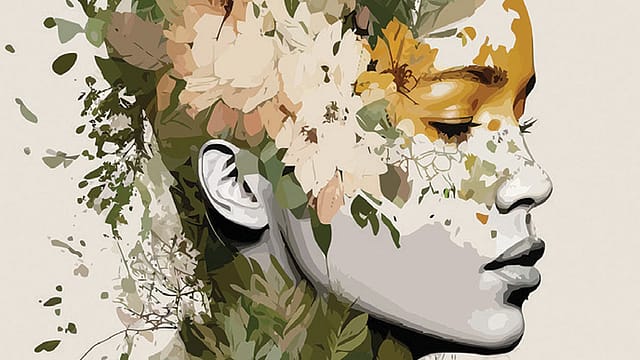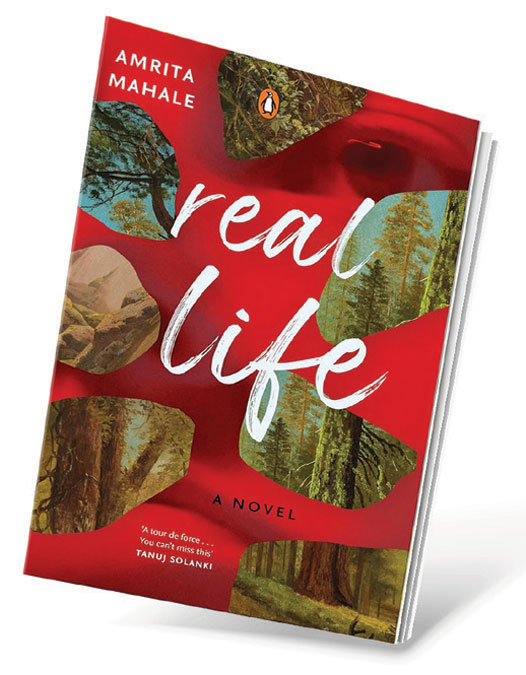Wild Terrains


PER ASPERA AD ASTRA—Latin for “through hardship to the stars”—is a phrase that is mentioned on the first page of Amrita Mahale’s Real Life. The book’s main protagonist, Tara, had got that motto tattooed on her nape, and it becomes (as Chapter 1 seems to suggest) the means of identifying her. For Tara’s disappearance forms the main crux of this story: a disappearance that sparks off a search, of course, but also churns up a whole host of memories, questions, and regrets.
Mahale divides her book into three parts, each with a different central character, but all three meshes in such a way that the story is a single one that revolves around Tara. Tara, in her early thirties, is a biologist studying dholes (Indian wild dogs) in the Himalayas. For the past eight years, Tara had been doing field work, mostly near a town named Jora—which sounds like a fictitious, smaller version of Manali, catering largely to the drug-chasing, partying-hard crowd from both home and abroad.
Living alone in Jora, going up to a nearby glacier and into the nearby forest on the heels of the dholes, Tara vanishes. Part 1 of the book is told, in the first person, by Tara’s friend Mansi, who reminisces about the many years of their friendship even as she journeys to Jora and tries to find clues that can help her understand what might have happened. Mansi’s memories, of confidences, quarrels, betrayal, and forgiveness, ultimately lead to the person who forms the focus of Part 2, Bhaskar.
Bhaskar’s story is told in the third person: a man from a small town who had been Mansi’s classmate in college. A prank gone awry seems to have marked Bhaskar for life, and has made him obsessive about the name Tara: an obsession that led him into an affair with Tara? Or not?
Lost: The Unstoppable Decline of Congress
05 Dec 2025 - Vol 04 | Issue 50
Serial defeats | Leadership in denial | Power struggles
The third part of the book continues in the third person, but the story has finally reached its central character: the perspective here is Tara’s, the story told is hers.
While the three parts of Real Life are from three different points of view, this is not the Rashomon effect on display. This is a story being taken forward, layers peeled away to reveal what lies beneath. Each layer takes the reader further into the life and personality of Tara, all the while touching upon a range of topics that are pertinent today.
There is, for instance, the whole thing about AI and chatbots, and how much we’re willing for (or wanting) technology to govern our lives. Bhaskar is a techie, and a hair-raising episode from his life shines the light on our ability—or not— to use tech wisely. There is, too, the way we have made social media our god: a god which commands us to always be on display, to not have a moment’s privacy, and how that takes its toll.
The story provokes thoughts on casteism and classism. On corruption. On nature, the environment, and its destruction. And most emphatically, on women and the hardships they face. Through the stories of Mansi and Tara, a picture that is disturbingly true to life is built up. The sacrifices women are expected to make for ‘love’; the onus for home and family that is piled onto them. The double standards, the suspicion with which an independent-minded woman is regarded. The boundaries that surround a woman’s body, sexual life, career, individuality—everything.
Real Life is an absorbing, thought-provoking story. The three lead characters are satisfyingly three-dimensional, and Mahale’s prose is bang on, suited to the character, the situation, the space. It is as fluid, as versatile, as the plot itself, which goes from an exploration of womanhood and friendship, into a mystery, and then back into feminism, but with the added insight offered by a strong-willed, fiercely independent character.
